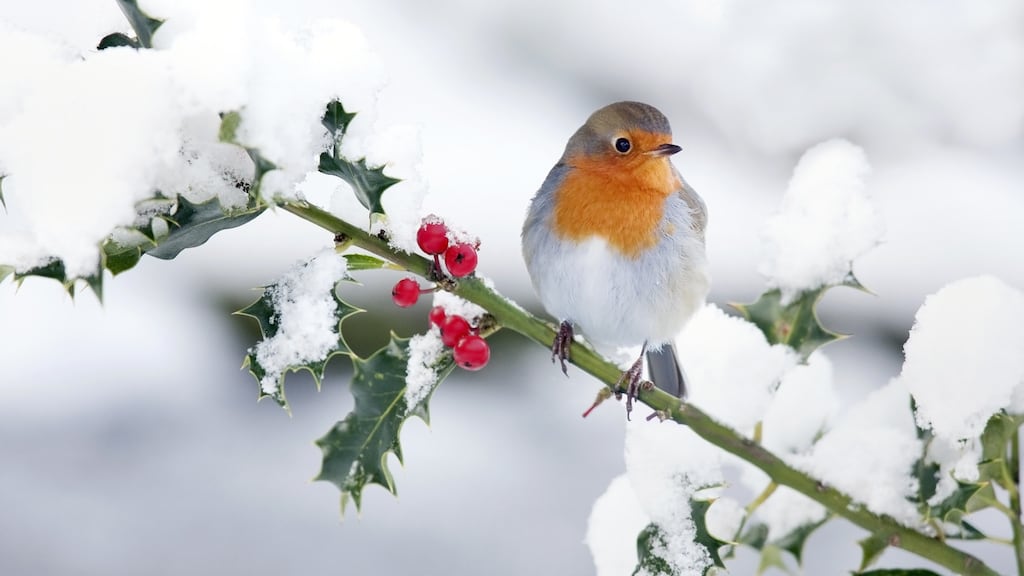It’s not only humans who have a tendency to get drunk this time of year, apparently. The hazards of the season also include inebriated birds, flying into buildings or falling out of trees because they’ve had one too many. In their case, the intoxicant is berries. Their excuse, if they need one, is the weather.
The frosts that descended in recent days have the side-effect of causing berries to ferment.
Starches are converted to sugar and, when the berries thaw, yeast may speed up the process. Then the innocent birds eat them as usual, but with unexpected results.
Writing about the phenomenon a while back, National Geographic magazine suggested the birds most likely to overindulge were immature: the older ones knowing better from experience. Either way, effects range from mere "tipsiness" to, as recorded in the UK a few years ago, "fatal falls onto concrete from a berry-laden holly bush".
Dancing at the crossroads (between life and death) – An Irishman’s Diary about November 30th’s otherworldly reputation
Banging on about Swift – An Irishman’s Diary about why Dublin doesn’t make enough noise about one of its greatest writers
Lagan Behind – An Irishman’s Diary about JoAnn Falletta and Van Morrison
Hearse of a Different Colour – An Irishman’s Diary about the strange etymological story of how an agricultural implement turned into a funeral car
The phenomenon is not confined to winter. Similar effects have been noted among wildlife feasting on overripe berries in autumn. But this being December, for careless young birds, tis the season to eat holly. So next time you see a robin, posing merrily against the backdrop of red berries, you may be looking at a juvenile delinquent.
It’s just as well, perhaps, that holly berries are toxic to humans. In any case, this hasn’t prevented the plant from being revered since ancient times.
It was central to the Roman mid-winter festival of Saturnalia. It was sacred to the Druids.
And as one of the forest “nobles”, along with oak, ash, and other aristocrats, it was protected by Brehon law, with fines of livestock for those who damaged or felled one: up to “two and a half milch cows” per tree.
Noble or not, you don't think of holly trees in quite the same company as oaks. But in ideal conditions, which in Ireland means the wind-protected east, they can grow to more than 20 metres high. On the west coast, by contrast, they tend to be mere shrubs.
Despite which, the 2018 edition of Kerry's Caherdaniel Parish Magazine devotes a fascinating essay to the subject, written by John McLoughlin, Cahirsiveen man and former head of the Tree Council of Ireland.
As his piece reminds us, the holly’s ancient associations with the winter solstice was rebranded in the Christian era when its prickliness became a symbol of the crown of thorns and its berries the blood of Christ.
So in the Kerry of McLoughlin’s childhood, sprigs of the sacred plant were “placed with abandon throughout the house, behind pictures, on the mantelpiece – in fact, any place that would hold it” each December.
Holly also provided the garland around the Christmas candle that everyone put in the window then and that, depending on local tradition, was lit by the youngest family member or the head of household.
Those days have passed in favour of Christmas trees and a wider range of decorations. Besides which, as McLoughlin says, climate change is threatening to rob holly of its special association with mid-winter, as berries (exclusive to the female tree but only occurring where male trees are also present) ripen earlier.
But paradoxically, now that sprigs are no longer so widely harvested, the holly tree population is under more pressure. This is because today, people cut the whole thing down, something once considered an invitation to bad luck.
Insofar as holly retains any reputation for special powers now, they may be confined to meteorology. You will still hear it confidently proclaimed that a shortage or excess of berries presages a mild or hard winter. On the contrary, it has more to do with last winter than the coming one.
There was a more exotic belief once, in parts of England at least, that the decorative holly sprigs in a house needed to be in harmony or the relationship between husband and wife would suffer.
Specifically, the pricklier holly (found on the lower part of the wild plant, for maximum protection) was thought to represent the male spouse, while the smoother stood for the female. If one kind dominated, trouble ensued.
While that superstition is presumed long extinct, another marriage involving holly endures, as it has for centuries.
In Christmas decorations (and the names of twin girls born in December), Holly is still often accompanied by Ivy.
This is because, in Christian symbolism, the latter’s year-round greenness meant eternal life.
But for the ancient Romans, who must have known about the bingeing birds, ivy was dedicated to the god Bacchus, as a supposed preventive of drunkenness.














